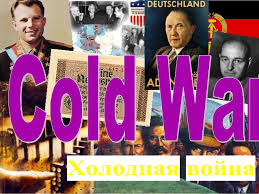
Media Industries- An analysis of the escalating conglomeration and convergence of media
Order Instructions:
Escalating media conglomeration and convergence has caused some debate amongst media scholars, analysts and commentators as to the overall effects. Considering both sides of the argument, when it comes to media industries and their products, but also employees and consumers, has increased conglomeration and convergence overall been positive or negative? Ensure you use detailed examples and scholarly research to strengthen your discussion.
2000 word essay on the above question. To be written at undergraduate level. Please reflect on many sources and examples. Please write according to the rubric as attached.
SAMPLE ANSWER
Escalating conglomeration and convergence of media
Media Industries- An analysis of the escalating conglomeration and convergence of media
Introduction
The traditional meaning of the word media or media outlet was the collection of individual news organizations who engage in the business of information transmission either through print or broadcast means (Croteau et al, 2012). These therefore included radio broadcasting houses, Newspaper companies and television broadcasters. For a long time these organizations operated as independent companies that specialized in one of the media forms or at times two or three forms of media. In the last two decades however, two terms have gained increasing popularity in the description of the operations of this industry (Flew, 2011). These are ‘Media Convergence’ and ‘Media Conglomeration.’
The term conglomeration refers to the coming together of two or more business entities with the aim of formulating a business organization whose capacity is greater than that of the individual players. The term media conglomerate refers to a business entity that is comprised of a large number of media companies. Other terms that are used interchangeably with media conglomerates are media institutions or media groups (Bryant el al, ). These entities are usually owned by a mother company which then takes charge of the television broadcasters, print companies, radio broadcasters, magazines, online news agencies and even movie companies. A defining characteristic of media conglomerates is their continuous effort to keep growing as they continue to absorb smaller media companies. This growth is driven by the urge to increase the control that the conglomerate has over the national or international media industry (Biagi, 2011).
Media convergence on the other hand refers to the coming together of different forms of media together through electronic means (Dwyer, 2010). This means that the different forms of media form a network that is supported by the existent Information Technology Infrastructure. It therefore involves a lot of computerization of the content that is being communicated by the media entities that take part in the process of convergence. With today’s technology, the internet forms the backbone of the different ways that media convergence is manifested. When this happens, the media companies involved form a system which allows them to coexist on a relatively level platform (Varnelis, 2012). It allows journalists and other generators of content to have their material presented in different forms rather than the past when one’s trade in the media industry was restricted to one area. This is the gradual transformation of the media industry into a ‘One Stop Shop’ operation.
Two key differences therefore emerge with regard to media conglomeration and media convergence. The first of these differences is the fact that media conglomeration is formal whereas media convergence is more of an informal process. The second difference that emerges is in the area which power is concentrated. With media conglomeration, the process gradually increases the power of the company which owns the media organizations. In Media Convergence however, the more the process takes place, the greater the power of the consumer due to the variety of options which are presented (Curran et al, 2013).
The purpose of this exercise is to analyze media convergence and media conglomeration with the view of establishing if these phenomena are indeed positive or negative in light of the impact they have on the media industry’s products, those employed inside it and also the consumers. The final conclusion of this matter will therefore be the result of the careful consideration of how the mentioned parties are affected by these forces. Each of these will be analyzed independently with the aim of highlighting the positive and negative impact that media conglomeration and media convergence have had on them.
Employees in the Media Industry
This is the population of individuals who make a living by working in the different sectors of the media industry. They include journalists, news anchors, columnists, cameramen, radio personalities, entertainers and also the different editors and directors. As the dynamics in the media industry continue to shift, they are the ones who feel these effects first hand given that they are the industry’s human resource.
Conglomeration
As smaller media organizations get swallowed up into larger media conglomerates, those who have been employed in the industry are exposed to advantages and challenges unique to them. One of the advantages that employees get as a result of media conglomeration is improved remunerations due to higher salaries which are made possible by the greater pool of resources controlled by the conglomerates (Curran et al, 2013).
Another advantage realized by employees in the media industry as a result of conglomeration is increased flexibility due to the fact that they are no-longer restricted to localized versions. This is because of the fact that the conglomerates tend to serve a much larger audience meaning that broader topics can be addressed. There is also increased work flexibility given the fact that conglomerates are significantly larger than independent media organizations. The flexibility gives the employees a chance to work in areas that they either have a deep interest in, skills or even passion and the result of this is greater job satisfaction.
For the employees whose jobs expose them to the public, a greater audience means that their clout increases and this grants them a chance to curve out a niche for themselves in the media industry. This primarily refers to the entertainers and journalists on broadcast media. As a result of their unique audience, they get to develop themselves into brands such as Richard Quest and Christiane Anampour of CNN who have become authorities in the areas of business reporting and conflict reporting respectively.
Conglomeration also exposes employees in the media industry to a number of challenges, the first one being an increased risk of them losing their jobs. The risk of job losses is based on the fact that conglomerates tend to focus on the market share they are gaining even if it is at the expense of the employees of the partner media organizations (Winseck, 2012). The main reason why they are exposed to this risk is the fact that having them within the conglomerate amounts to an increase in redundancy, especially for those who are employed on account of their technical skills (Bird, 2011).
Another challenge posed by media conglomeration is that it leads to a reduction in the collective bargaining rights that these employees have since their say becomes much smaller owing to the absorption of their employers into these conglomerates (Gião et al, 2010). What this then means for them is that they have a very limited say with respect to their roles as they now have to cater to the needs of the conglomerate rather than their local audiences.
Media Convergence
Media convergence serves as an advantage to the employees who work in the media industry because of the fact that their products get to have a much wider audience given the universality of internet which forms the backbone of media convergence (Kellner, 2011).
Employees also get to better refine their materials for two main reasons. The first reason is that electronic platforms allow for immediate feedback from the consumers. The second reason is that he level platform for the different forms of media leads to increased competition (Walther et al, 2010).
A challenge that results from media convergence for the employees in the media industry is that intellectual property is often abused and replicated often to the loss of the creators and this results in decreased revenue (Pavlik and McIntosh, 2011).
Another challenge of media convergence is the reduction of relevance of some forms of media such as print thus leading to job cuts due to reduced demand. Media convergence further threatens the livelihoods of many employees in the media industry as a result of the emergence of players who have taken over traditional income streams such as advertising which the internet as largely taken from traditional media such as print and broadcast (Hirst, 2011).
The impact of Convergence and Conglomeration on Content
Content refers to the materials that media companies prepare and present their consumers with through a variety of ways such as print, online, radio transmissions and also television broadcasts. It therefore includes news items, television programs, political commentaries, sports and also entertainment which is presented audio visually, on radio, in publications and also on the internet. In the case of media convergence, this material is accessible from a single point, usually through an internet-enabled device.
Conglomeration
One of the positive impacts that conglomeration has on the content is that it ensures that the content generated has a much wider audience in the media conglomerate scenario. This is because of the financial backing as well as reach that was previously controlled by media organizations that have now been absorbed into the conglomerates.
Another positive impact that conglomerates have on content is the improvement in the quality of different media products (Kawashima, 2011). A reason for this improvement in quality is the fact that these conglomerates serve a much wider and more diverse audience and this means that materials have to be subjected to stricter scrutiny before they are declared fit for distribution. Another reason why quality improves for the content is the fact that these conglomerates tend to have a wide pool of expertise thus leading to a constant supply of individuals who then contribute to ensuring the content available is top notch.
A challenge that results from media conglomeration is the fact that the overall quality of content will go down due to intense replication of themes and concepts in a bid to ensure that maximum exploitation has been carried out on a successful idea. Another challenge that will affect content is the lack of locally relevant material in the wake of homogenization of media products to fit the demands of a market spread across a vast area. This then makes many localized issues go under-exposed or reported.
Media convergence makes content much more interactive and gives it a chance to be accessed in a wide range of formats depending on the consumer’s preference. This grants content in the media industry a new lease of life due to increased interactiveness. The reach of content is further widened by the fact that consumers can share what they have read, watched or listened to thus increasing market reach (Meikle, G., & Young, S. (2012).).
A downside of convergence however is the fact that it facilitates the duplication of content by third parties and this eats into revenues that would have been generated had the end consumers all paid for or purchased this content.
The impact of conglomeration and convergence on consumers
A benefit that consumers realize as a result of media conglomeration is the access that they get to content that would otherwise have been restricted had the media organization been based within the country. This is especially true of many South American and Asian countries where dictatorial governments have a tight control over the freedoms of the media industry (Sallai, 2012).
Conglomeration appears to offer limited benefits to the consumers since it is mainly designed with the aim of making profits and this means that consumers of the media industry are exposed to higher prices due to the emergence of monopolies that control market prices for the wide range of media products (Croteau et al, 2014).
Another challenge faced by consumers as a result of media conglomeration is the limiting of content. While it would be expected that conglomerates have a higher capacity to deliver content, it is important to note that they operate across many markets and this means that their ability to cater to specific audiences becomes limited given the existence of different cultures and value systems (Hadland et al, 2012).
Media convergence on the other hand is highly beneficial to the consumers since it allows them to choose the media products they want to consume and the format in which they want them. An example of this is the subscription that a consumer can make to a news organization’s social media profile so as to receive regular sport updates (Christopherson, 2007). This also allows the consumers to save on media costs by only paying for what they consume (Straubhaar et al, 2010).
Conclusion
Based on the above analysis of the positive and negative impacts of media conglomeration and convergence, it is safe to state that the negatives ultimately outweigh the positives in as far as the employees, consumers and content is concerned. This therefore means that the increasing rate of convergence and conglomeration in the media industry is largely negative (Schatz, 2013).
References
Biagi, S. (2011). Media impact: An introduction to mass media. Cengage Learning.
Bird, S. E. (2011). Are we all producers now? Convergence and media audience practices. Cultural Studies, 25(4-5), 502-516.
Bryant, J., Thompson, S., & Finklea, B. W. (2012). Fundamentals of media effects. Waveland Press.
Christopherson, S. (2011). How concentration in distribution affects the production side of the media entertainment industry. The Political Economies of Media: The Transformation of the Global Media Industries, 123.
Croteau, D. P., Hoynes, W. D., & Milan, S. (2014). The Economics of the Media Industry. Gender, Race, and Class in Media, 28.
Croteau, D., Hoynes, W., & Milan, S. (2012). Media/society: Industries, images, and audiences. Sage Publications.
Curran, J., Smith, A., & Wingate, P. (Eds.). (2013). Impacts and Influences: Media Power in the Twentieth Century. Routledge.
Doyle, G. (2013). Understanding media economics. SAGE Publications Limited.
Dwyer, T. (2010). Media convergence. McGraw-Hill International.
Flew, T. (2011). Conglomeration and globalization as accumulation strategies in an age of digital media. The Political Economies of Media: The Transformation of the Global Media Industries, 84.
Gião, P. R., Borini, F. M., Júnior, O., & de Miranda, M. (2010). The influence of technology on the performance of Brazilian call centers. JISTEM-Journal of Information Systems and Technology Management, 7(2), 335-352.
Hadland, A., & Zhang, S. I. (2012). The “paradox of commercialization” and its impact on media-state relations in China and South Africa. Chinese Journal of Communication, 5(3), 316-335.
Hirst, M. (2011). News 2.0: can journalism survive the Internet?. Allen & Unwin.
Kawashima, N. (2011). Are the global media and entertainment conglomerates having an impact on cultural diversity? A critical assessment of the argument in the case of the film industry. International journal of cultural policy, 17(5), 475-489.
Kellner, D. (2011). Cultural studies, multiculturalism, and media culture. Gender, race, and class in media: A critical reader, 7-18.
Meikle, G., & Young, S. (2012). Media convergence: Networked digital media in everyday life. Palgrave Macmillan.
Pavlik, J. V., & McIntosh, S. (2011). Converging media: A new introduction to mass communication. New York: Oxford University Press.
Sallai, G. (2012). The cradle of cognitive infocommunications. Acta Polytechnica Hungarica, 9(1), 171-181.
Schatz, T. (2013). CONGLOMERATE HOLLYWOOD AND AMERICAN INDEPENDENT FILM. American Independent Cinema: Indie, Indiewood and Beyond, 127.
Straubhaar, J. D., LaRose, R., & Davenport, L. (2010). Media Now: Understanding Media: Understanding Media, Culture, and Technology. Cengage Learning.
Varnelis, K. (2012). Networked publics. The MIT Press.
Walther, J. B., Carr, C. T., Choi, S. S. W., DeAndrea, D. C., Kim, J., Tong, S. T., & Van Der Heide, B. (2010). Interaction of interpersonal, peer, and media influence sources online. A networked self: Identity, community, and culture on social network sites, 17-38.
Winseck, D. (2012). Assessing the Effects of the Bell–Astral Acquisition on Media Ownership and Concentration in Canada.
We can write this or a similar paper for you! Simply fill the order form!












